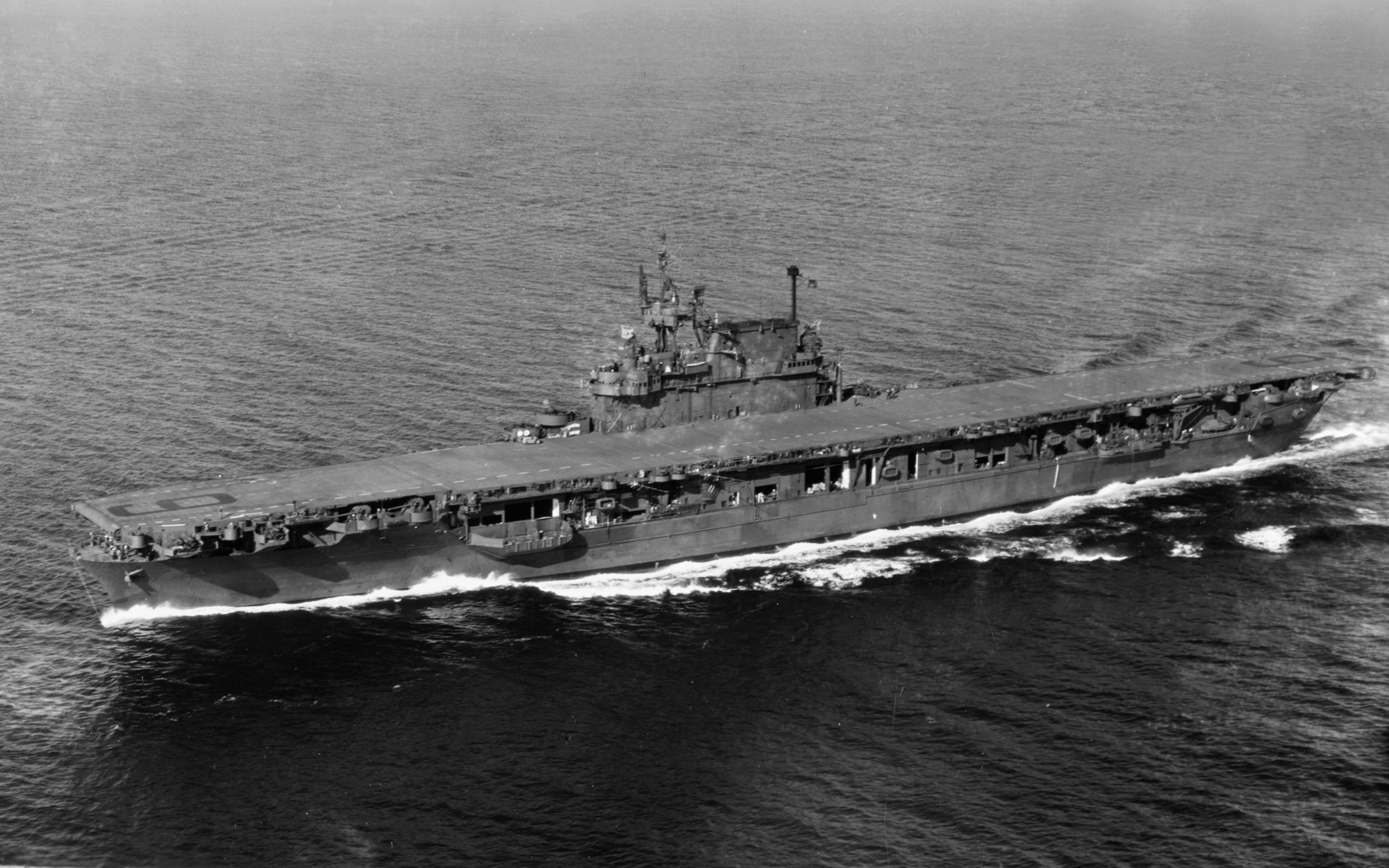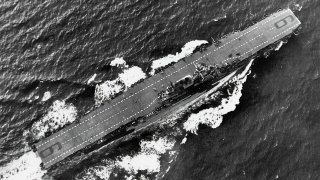USS Enterprise (CV-6): The Greatest Aircraft Carrier Ever
The USS Enterprise (CV-6), also known as "The Big E" or the "Gray Ghost," stands as the most decorated and legendary aircraft carrier of World War II.
Summary: The USS Enterprise (CV-6), also known as "The Big E" or the "Gray Ghost," stands as the most decorated and legendary aircraft carrier of World War II. Pioneering naval aviation and warfare, it earned an unprecedented 20 battle stars, the Presidential Unit Citation, and the Navy Unit Commendation, along with the unique honor of receiving the British Admiralty Pennant. Participating in nearly every major Pacific Theater battle, including the pivotal Battle of Midway, the Enterprise played a crucial role in the American victory. Despite efforts to preserve it as a museum, the Enterprise was scrapped, leaving a legacy that transcends its physical existence.
The Unmatched Legacy of the USS Enterprise: The Greatest Aircraft Carrier of WWII
There was a time when the aircraft carrier was probably the greatest surface warship ever. That was during the Second World War. Back then, no one really knew how best to use the aircraft carrier in either the United States or the British Empire (the British Royal Navy was the creator of the aircraft carrier that all other navies eventually copied). It was the Japanese, though, who first innovated the use of the aircraft carrier as a decisive offensive platform.
That was demonstrated with devastating efficiency on December 7, 1941, when the Imperial Japanese Navy (IJN) launched their sneak attack on the US military facilities at Pearl Harbor.
Despite the fact that Japan clearly understood the potency of the aircraft carrier first, not a single Japanese flat top should be remembered as the greatest carrier of the Second World War. Instead, that honor goes to the country that was attacked by Japan on December 7.
The United States Navy was forced to prioritize using their carriers in combat against the Japanese because those were the most readily available units after so much of the US Navy’s Pacific Fleet was decimated by the Japanese surprise attack at Pearl Harbor. One US aircraft carrier in particular should be remembered as the greatest carrier in history.
USS Enterprise Leaves Her Mark on History (and Pop Culture)
That is the USS Enterprise (CV-6). Known alternatively as “The Big E” or the “Gray Ghost,” Enterprise’s history transcends the Second World War. In fact, it goes beyond the warship itself. Another US Navy warship, a nuclear-powered Nimitz-class aircraft carrier (CVN-65), as well as two spaceships—one real, a NASA space shuttle, and the other a fictional starship in Gene Roddenberry’s epic, “wagon train to the stars,” Star Trek—bear her name. If that doesn’t show how powerful the name Enterprise has been in American history, the nothing will prove it.
The seventh US warship to bear the name Enterprise, CV-6 carried—and enhanced—the warship’s legacy for all of history. The Enterprise was the most decorated warship of World War II. Enterprise earned an astounding 20 battle stars over the course of the war. CV-6 was awarded the Presidential Unit Citation as well as the Navy Unit Commendation, making history as the only warship to receive both awards in WWII. What’s more, Enterprise enjoys the unique honor of being the only non-British warship to have received the British Admiralty Pennant.
USS Enterprise served in all but two major battles in the Pacific Theater of WWII. The Enterprise participated in the famous Doolittle Raid on Japan. It provided support for the USS Hornet, the aircraft carrier that the US Army’s B-25 bombers took off from and bombed industrial targets in Tokyo shortly after the Pearl Harbor attacks. While not directly responsible for launching the Army’s bombers on that legendary punitive air raid against Japan, the Enterprise attacked key naval targets that bogged down any Japanese naval response to the presence of the American armada that was launching Doolittle’s raid.

But the Enterprise’s most important contribution was during the Battle of Midway. A battle that most war historians list as one of the key turning points of WW2, Enterprise played a pivotal role in winning that battle. The Battle of Midway is regarded as the first battle in history in which the dueling warships never set eyes on each other. It was, instead, the carrier air groups that fought each other. And the Enterprise’s air wing was responsible for sinking an astonishing three Japanese aircraft carriers and a cruiser.
Enterprise participated in the Battle of Guadalcanal, as well as the Battle of Leyte Gulf (and many others in between). Each battle, she reminded the world why she was the greatest aircraft carrier of all time. At the Battles of the Eastern Solomon Islands and Santa Cruz Islands, Big E was damaged. Yet so great was her endurance that she stayed in the fight and deployed her lethal airwing both times.
Mothballing Great American History
The Gray Ghost’s days were numbered by the end of the war, though. Advances in naval aviation made her far too small and, basically, obsolete. The Navy did investigate if the Big E could be modernized. Sadly, the costs to do so outweighed the benefits. Enterprise was retired from active duty almost immediately upon its return from the war. It sat in mothballs for many years as various former crewmembers tried to gather funding to save her and turn the storied warship into a museum.
US Navy Admiral William “Bull” Halsey, a World War II hero who was one the architects of the American victory in the Pacific Theater, led an effort to get Congress to turn the Big E into a national monument. Congress did. But Congress refused to fund the project, leaving it up to the small band of former Enterprise crewmembers to get private funding to support the conversion of the Enterprise into a floating museum. Congress gave the USS Enterprise (CV-6) Association just six months to scrounge together the funds.
That timeline proved to be too short, even for such notable war heroes, like Bull Halsey and Admiral Thomas Kincaid (who flew his flag from the Enterprise during the Battle of the Coral Sea in 1942), to gather requisite funding. The Big E was ultimately sold for scrap metal. She was completely erased from existence by 1961, the same year that her successor, the nuclear-powered Enterprise was launched. That Enterprise would servefrom 1961-2012, lasting far longer in the fleet than the legendary CV-6 did.
The Enterprise’s great memory remains, though. And she forever will be the greatest aircraft carrier that ever existed. Especially because the age of the aircraft carrier is likely over. When the next great war erupts—sadly, sooner than later—submarines, unmanned systems, hypersonic weapons, and directed-energy platforms will write the outcome of that new world war the same way that the aircraft carrier did in WW2.
About the Author
Brandon J. Weichert, a National Interest national security analyst, is a former Congressional staffer and geopolitical analyst who is a contributor at The Washington Times, the Asia Times, and The-Pipeline. He is the author of Winning Space: How America Remains a Superpower, Biohacked: China’s Race to Control Life, and The Shadow War: Iran’s Quest for Supremacy. His next book, A Disaster of Our Own Making: How the West Lost Ukraine, is due October 22 from Encounter Books. Weichert can be followed via Twitter @WeTheBrandon.
Image Credit: Creative Commons.


